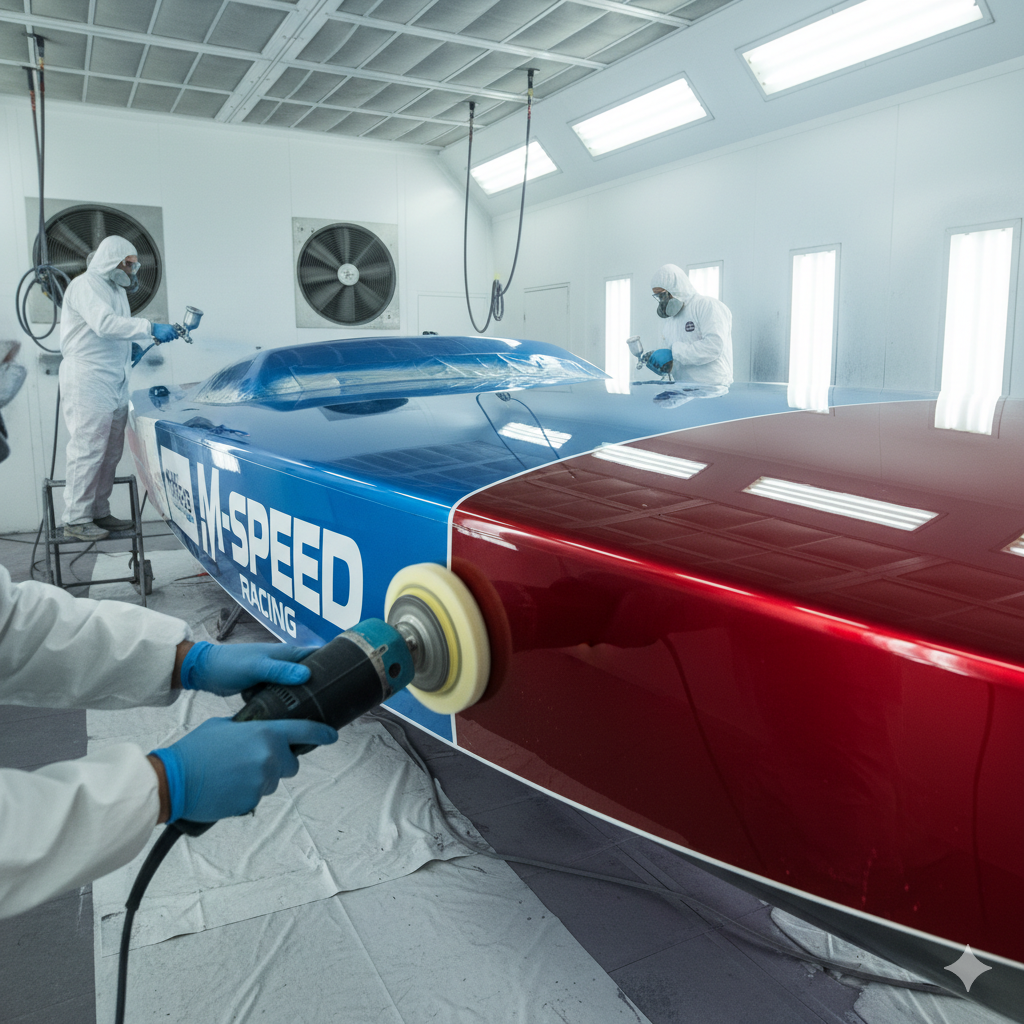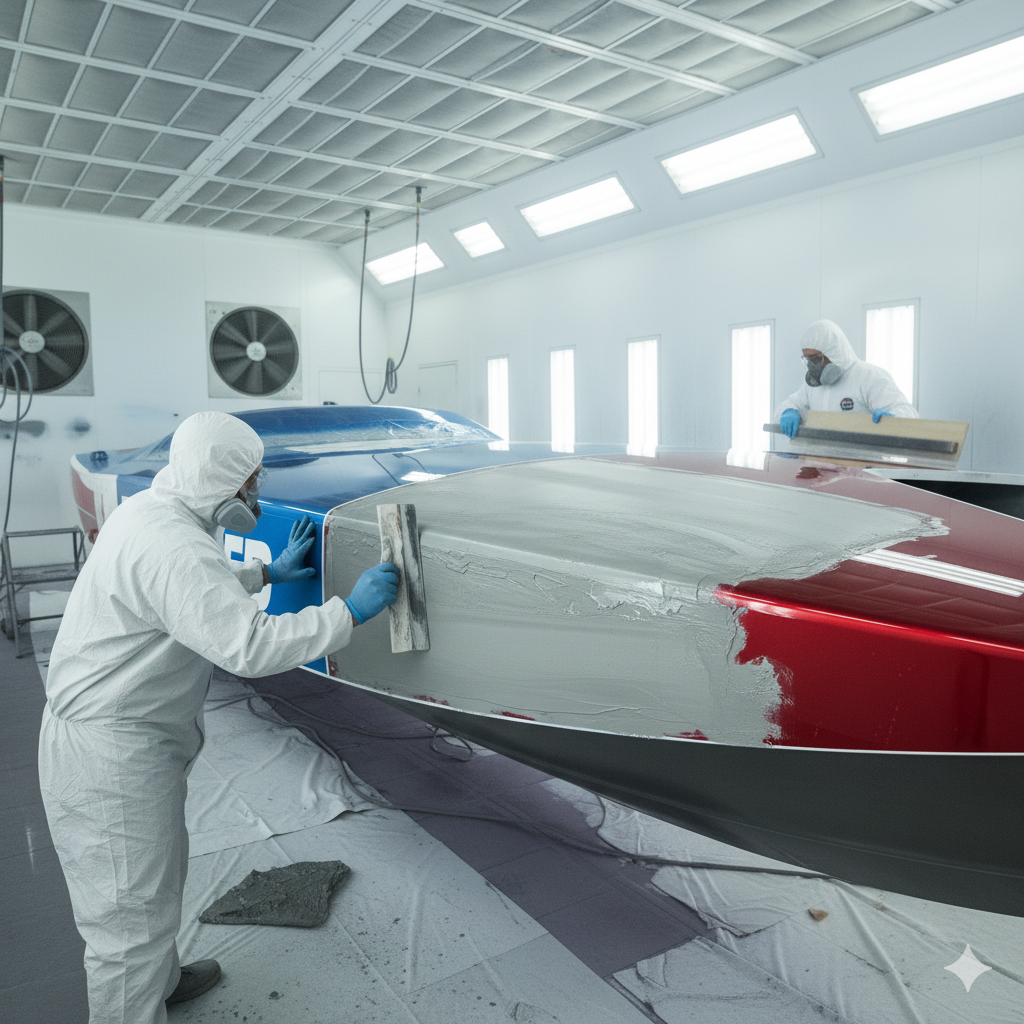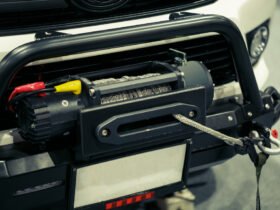When you see a race boat screaming across the water, what captures your eye? The speed, the wake, and, undoubtedly, the paint job.
More than just aesthetics, the finish on a high-performance boat is a critical component of its success. Painting a race boat is where art meets engineering, a high-stakes balance between stunning visuals and maximizing every knot of speed.
Why Paint Matters More on a Race Boat
For the average pleasure craft, a beautiful paint job is about protection and pride. For a race boat, the stakes are much higher. Every layer, every molecule of pigment, has to be scrutinized for its impact on performance.
1. Minimizing Drag (The Need for Speed)
This is the big one. The difference between winning and losing is often measured in millimeters and milliseconds. A poor finish can create friction (or drag) as the boat moves through the water, slowing you down.
-
Ultra-Smooth Finish: The goal is a mirror-like, flawless surface. Even microscopic imperfections can trap water and create turbulence.
-
Specialized Coatings: Some modern racing formulas utilize coatings designed to mimic the texture of sharkskin or other low-friction surfaces. While still debated, the principle is clear: reduce the coefficient of friction ($C_f$).
2. Weight Savings
Paint adds weight. On an offshore race boat, this might be a few pounds; on a small hydroplane, every ounce counts.
-
Thin Layers: Painters must apply the minimum necessary amount of primer, color, and clear coat to achieve protection and a smooth finish without adding unnecessary mass.
-
High-Tech Materials: Using lightweight, high-solids paints designed for performance boats is essential.
3. Hull Protection
Beneath the glamour, the paint is a vital shield. Race boat hulls are subjected to intense forces, high-speed impacts from water and debris, and harsh UV exposure. The paint must be durable enough to protect the underlying composite materials (like fiberglass, carbon fiber, or Kevlar) from degradation and water ingress.

The Race Boat Painting Process: A Step-by-Step Guide
This is not a weekend DIY project. It is a meticulous, professional endeavor.
1. Preparation: The Foundation of Speed
-
Stripping: Any old paint must be completely removed. Chemical strippers or careful sanding are used, but the underlying hull must remain perfectly intact.
-
Fairing: This is the most labor-intensive step. Hull surfaces are rarely perfectly smooth out of the mold. Fairing compound is applied, shaped, and sanded repeatedly to correct every subtle curve and imperfection. This guarantees the aerodynamic and hydrodynamic shape of the hull is perfect.
-
Priming: High-build epoxy primers are applied to seal the hull and provide a flawless, non-porous base for the color coats.
2. Application: Color and Clarity
-
Dust-Free Environment: Race boat Painting requires a climate-controlled, dust-free spray booth. Even a single speck of dust can create drag-inducing turbulence.
-
Spraying Technique: Painters use highly refined techniques to lay down the color in smooth, consistent layers, avoiding runs or ‘orange peel’ texture. High-quality polyurethane topside paints are the industry standard for their durability and gloss.
-
Graphics and Branding: The boat’s sponsors, numbers, and racing stripes are applied with stencils or high-quality vinyl decals, often layered and masked with extreme precision.
3. The Finish: Wet-Sanding and Polishing
This is where the finish goes from ‘good’ to ‘race-winning.’
-
The final clear coat is often wet-sanded with progressively finer grits (sometimes as high as $3000+$ grit).
The surface is then machine-polished with high-end compounds to achieve that signature, blinding, liquid gloss. This final polish is what reduces surface tension and drag to an absolute minimum.
The Takeaway: More Than a Livery
A race boat’s paint is a statement—a visible manifestation of its ambition. It showcases the team’s sponsors and gives the vessel its unique identity. But remember, the dazzling livery you see is merely the final, glossy result of an intensive process focused entirely on performance, weight management, and aerodynamic perfection.
The next time you watch a race, take a moment to appreciate the true artistry on display. That flawless finish isn’t just for show; it’s a meticulously crafted tool engineered for the podium.











Leave a Review